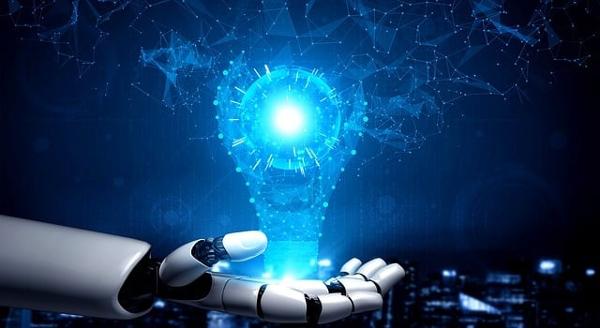The rapid advancement of artificial intelligence (AI) technologies and the proliferation of data centers have led to unprecedented demands on electricity and water resources, posing significant challenges to existing infrastructure. While these technological developments offer immense potential for innovation across various sectors, they also bring to light critical issues regarding energy consumption, water usage, and the capacity of current power grids to meet these growing needs.
Artificial intelligence, particularly in the realms of machine learning (ML) and deep learning (DL), requires extensive computational resources. These AI processes involve the analysis of vast datasets, necessitating powerful hardware such as Graphics Processing Units (GPUs) and Tensor Processing Units (TPUs). The training of sophisticated AI models can extend over prolonged periods, sometimes lasting weeks or months, resulting in sustained high energy consumption.
As AI integration deepens across industries including healthcare, finance, transportation, and entertainment, the energy requirements associated with its computational infrastructure continue to grow exponentially. This trend is reflected in the expanding energy footprint of data centers, which serve as the primary hosts for these AI systems.
Data centers, fundamental to the digital economy, are responsible for storing and processing enormous volumes of information. Current estimates suggest that data centers globally account for approximately 1-2% of the world's electricity consumption. This figure is projected to rise significantly as both the volume of data stored and the complexity of AI tasks increase in the coming years.
An often overlooked aspect of data center operations is their substantial water consumption. The constant operation of servers generates considerable heat, necessitating effective cooling systems to prevent equipment failures. Many data centers employ evaporative cooling techniques, which use water as a medium to absorb and dissipate heat.
The scale of water usage in large data centers is substantial, with some facilities consuming millions of gallons of water daily for cooling purposes. This high water demand poses growing concerns, particularly in regions already experiencing water scarcity or drought conditions. For instance, the operation of data centers in water-stressed areas such as parts of California or Arizona can exacerbate existing resource pressures.
As AI usage expands and data centers proliferate, their water consumption could place significant strain on local water supplies, especially in arid or water-stressed regions. This situation underscores the need for more sustainable cooling solutions and water management practices in the tech industry.
The challenge of meeting the energy needs of AI and data centers is further complicated by the limitations of current electric grid infrastructure. Data centers require continuous, high-quality electricity, and their substantial power needs can place considerable strain on local power grids. In many areas, particularly rural or underserved regions where some data centers are located due to lower operational costs, the transmission and distribution systems are ill-equipped to handle these growing energy demands.
A potential solution involves situating new AI-focused data centers near renewable energy sources, such as wind and solar farms. However, this approach presents its own set of challenges. The energy generated by these renewable sources must be transmitted to the data centers, often over long distances. Current infrastructure frequently lacks the necessary high-voltage transmission lines to efficiently transport this power. Consequently, even when renewable energy is available, data centers may be unable to fully utilize it, instead relying on local fossil fuel-based power plants. This situation not only limits the potential environmental benefits but also compounds the overall impact of these facilities.
The existing grid faces multiple issues, including capacity constraints, aging infrastructure, and geographical distribution limitations. In numerous regions, transmission lines have not been upgraded or expanded for decades, leaving them unable to cope with the massive increase in power demands from new technologies like AI. Without substantial investment in grid modernization and expansion, the ability to provide consistent, reliable power to data centers—and by extension, to the AI infrastructure they support—will be severely compromised.
Addressing these challenges requires significant investment in both power grid infrastructure and water management systems. Several key areas require attention:
- Transmission Line Upgrades: Modernizing and expanding the network of high-voltage transmission lines is crucial to accommodate the increased energy demand from data centers and AI applications. These upgraded lines would enable the efficient transport of renewable energy from distant generation sites to urban areas or rural data centers, reducing reliance on fossil fuels and decreasing the environmental footprint of these facilities.
- Efficient Cooling Technologies: Developing and implementing more efficient cooling technologies or transitioning to cooling systems that do not heavily rely on water is essential to mitigate the impact of data centers on local water resources. Innovations such as liquid cooling or advanced air cooling systems could significantly reduce water demand and the overall environmental impact of data centers.
- AI Integration in Grid Management: Leveraging AI technologies to optimize energy usage within the grid itself presents an innovative solution. AI algorithms can be employed to more accurately predict energy demand and distribute energy more effectively across the grid, minimizing waste and ensuring that data centers receive the necessary power without overwhelming local infrastructure.
To realize these improvements, collaboration between governments and the private sector is crucial. This partnership would ensure that these technologies are developed and implemented at scale, maximizing their impact on resource management and environmental sustainability.
The rise of AI and the expansion of data centers present both opportunities and challenges for technological advancement and resource management. While these technologies enable remarkable innovations across various sectors, they also place significant strain on existing energy and water resources. The limitations of current transmission infrastructure further amplify these challenges, creating obstacles for both environmental sustainability and economic growth.
Moving forward, substantial investments in grid modernization, renewable energy integration, and innovative cooling technologies will be essential to balance the benefits of AI with the sustainability of the infrastructure that supports it. By addressing these issues proactively, it may be possible to create a more resilient and sustainable digital ecosystem that can support continued technological advancement while minimizing environmental impact.
The path to achieving this balance will require concerted effort, significant resources, and ongoing innovation.




















